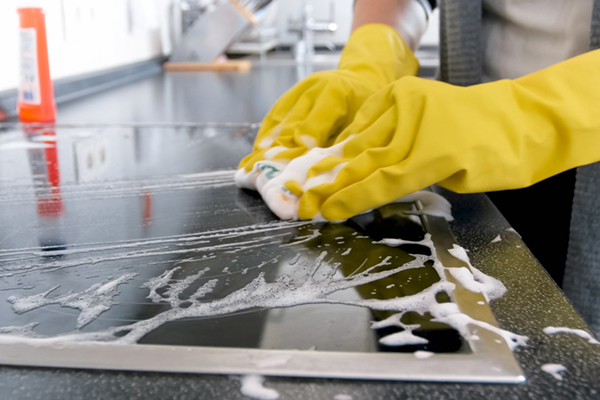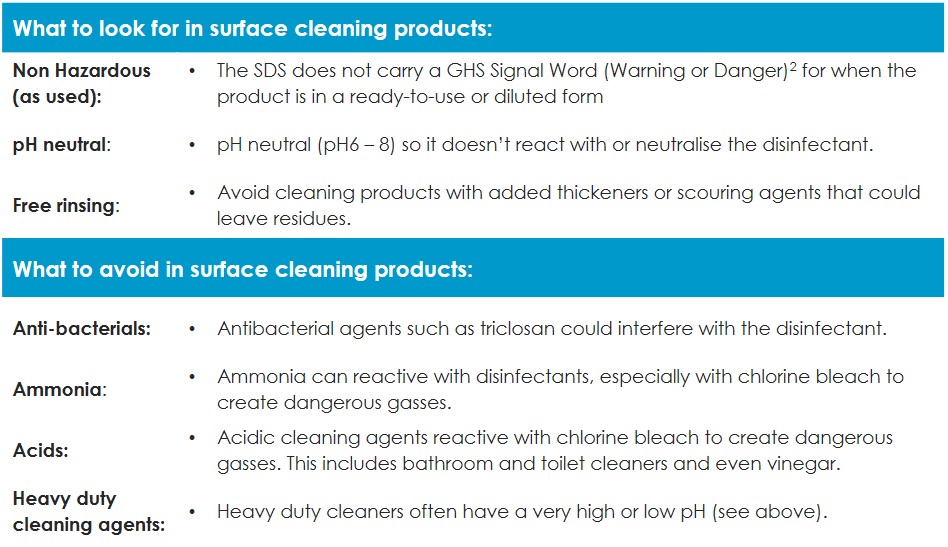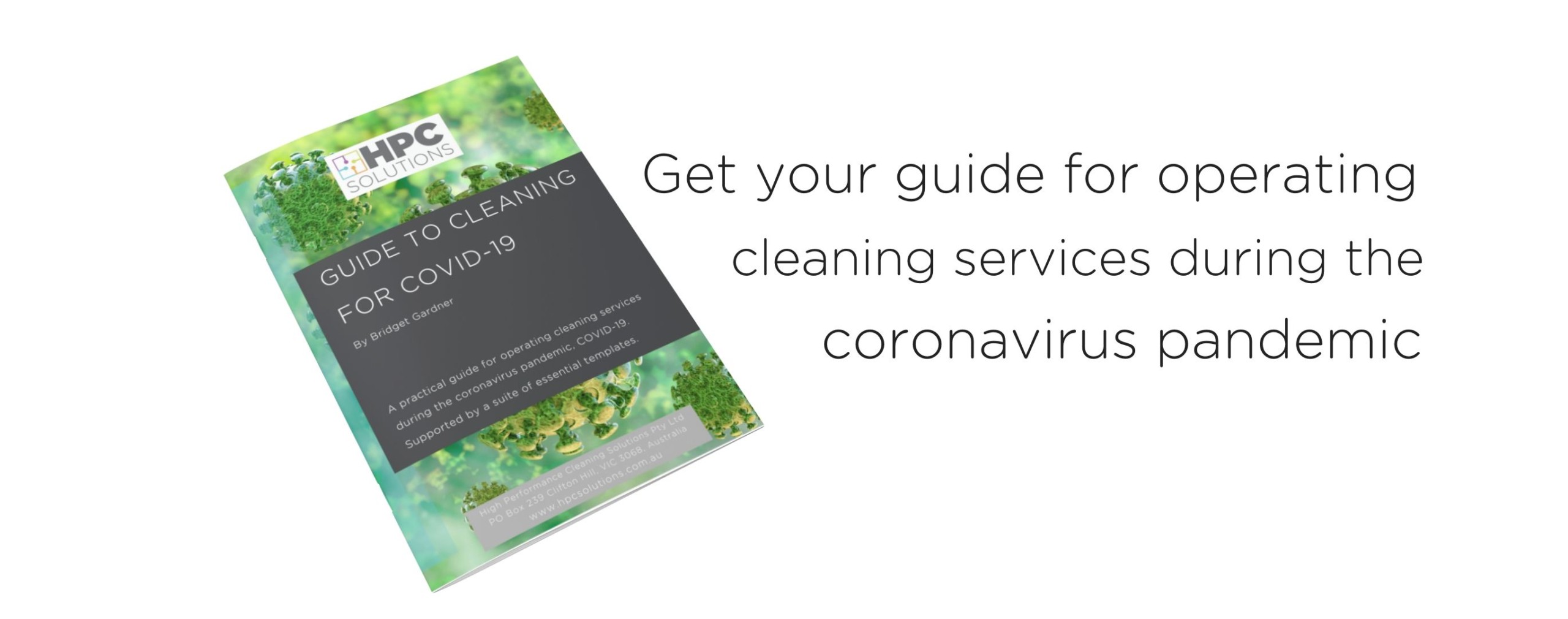We talk a lot of about the importance of cleaning and disinfecting frequently touched surfaces to prevent the spread of COVID-19. While it’s important to buy disinfectants able to kill the coronavirus, it’s just as important to choose a product that cleans the surface effectively and allows that disinfectant to work well.
This extract from HPC Solutions new Guide to Cleaning for COVID-19 will tell you how.
What is cleaning effectively?
According to the Australian Department of Health, cleaning means the physical action taken to remove germs, dirt and organic matter from the surface.1
There are three aspects to cleaning effectively:
- The cleaning agent (clean product / water)
- Friction and absorption (via the cleaning tool)
- Agitation (via manual or mechanical means)
The role of a surface cleaning agent is to break the proteins and fatty acids that bind germs, dirt and organic matter together, and to the surface, so it can be easily removed by wiping or mopping.
Why do we need to clean before disinfecting?
The reason it is vital to clean effectively before applying a disinfectant is:
- To give the disinfectant sufficient contact with the surface so it can kill the germs on it.
- The presence of organic matter, including detergent residue, can interfere or neutralise the effects of the disinfectant.
Rinsing the surface after cleaning is also important when cleaning and disinfecting surfaces where they may be heavy loads of organic soil, such as in kitchens and bathrooms.
If a stronger agents are required to lift stains, scale or heavy grease, rinse all chemical residue from the surface before adding a disinfectant, or it could cause harmful chemical reactions.

How to buy the right cleaning product
The type of product used to clean the surface can affect the efficacy (effectiveness) of the disinfectant.
The table below gives you a list of attributes to look for and avoid when buying surface cleaning products:

What to look for and avoid in cleaning products for COVID-19
Alternatives to detergent
When the Department of Health recommends the use of ‘cleaning solutions’ they are generally referring to the use a diluted surface cleaning detergent.
However there are alternatives to detergent for cleaning surfaces effectively. Other products that can meet the list of requirements just as well include:
- Altered water technologies such as Electrolysed Water or Aqueous Ozone
- Water and steam when used with quality microfibre cloths and mops.3
- If colloidal or enzyme based products are used, check with the manufacturer to confirm that it will not react or interfere with the type of disinfectant you use.
The product form
Cleaning products can be bought in a ready-to-use (RTU) form, a concentrated form (dilutable) or as pre-impregnated wipes.
Only buy cleaning agents in concentrated form if you have dose-controlled dispensing equipment onsite to ensure the concentration is correct as used.
This will prevent leaving residues on surfaces that could interfere with the disinfectant and leave organic matter behind that could create a reservoir for future viruses to survive in.
Also note that if you are using a 2-in-1 detergent/disinfectant product, you should clean visible organic matter from the surface first, before re-applying it as a disinfectant.
To learn about how to use cleaning products effectively to prevent the spread of COVID-19, buy your copy of the Guide to Cleaning for COVID-19 with 5 customisable templates today.
When you buy this essential Guide, you will automatically be given access to FREE updates and resources which I am constantly producing as the information changes.
I hope you find it valuable and please stay safe out there!
References:
- Cleaning and disinfecting to reduce COVID-19 transmission. Tips for non-healthcare settings, 20 March 2020, Department of Health and Human Services Victoria Government.
- Classifying chemicals using Globally Harmonised System (GHS) signal words, by Safe Work Australia
- Microfibre and steam for environmental cleaning during an outbreak, Gillespie E.

